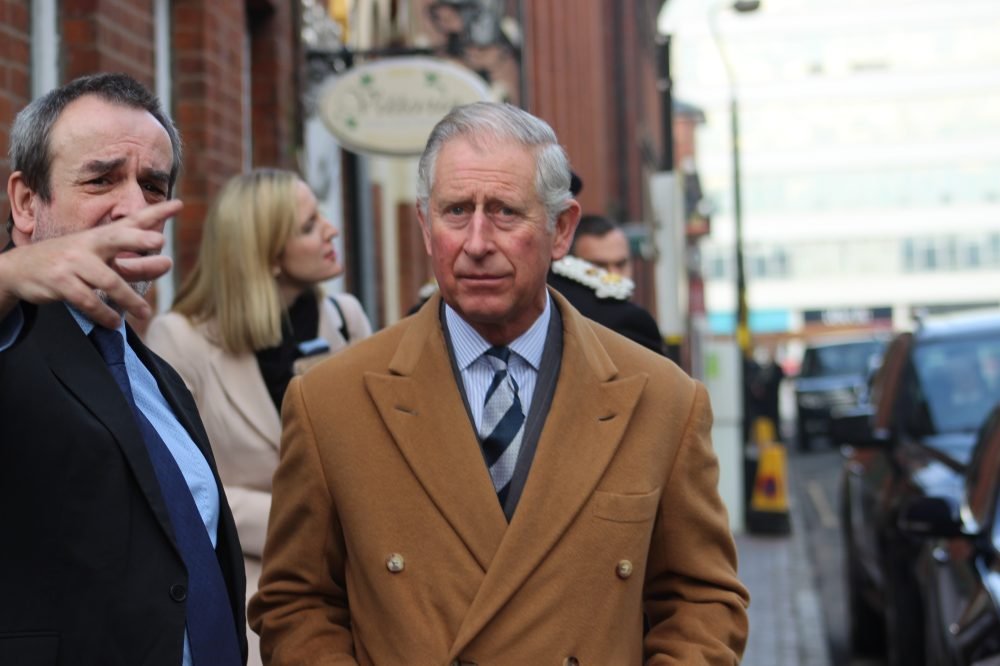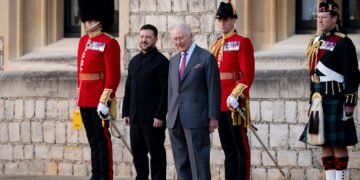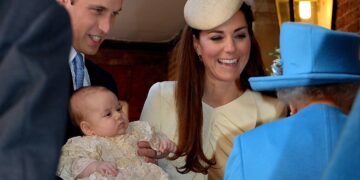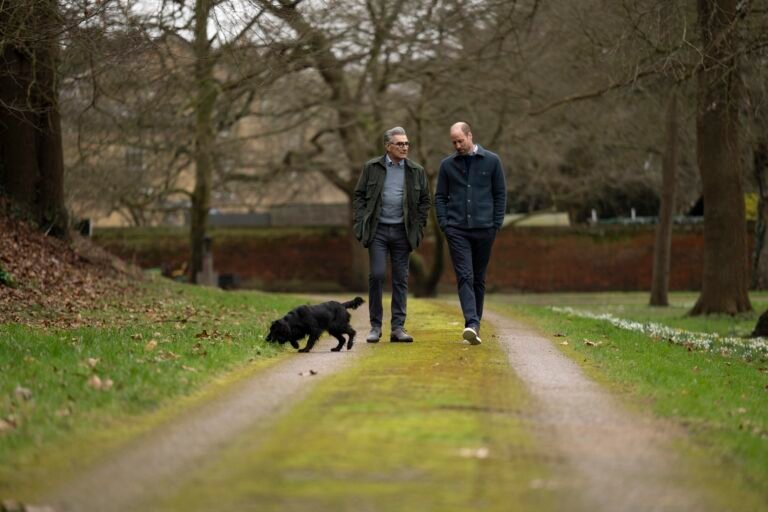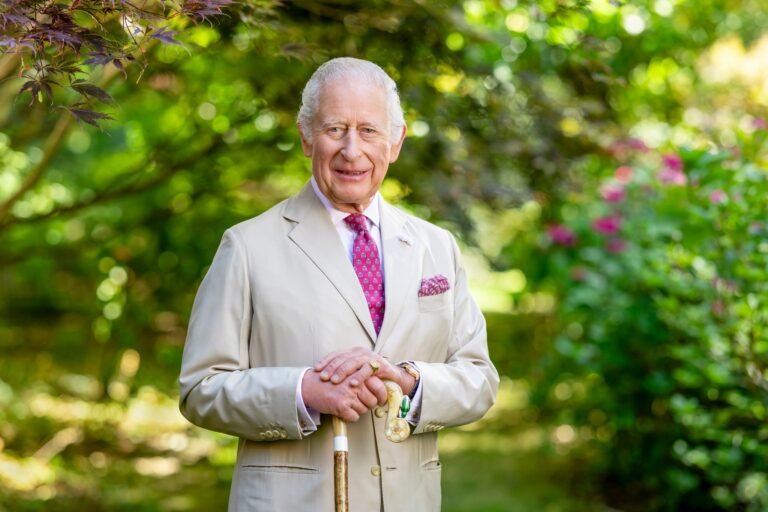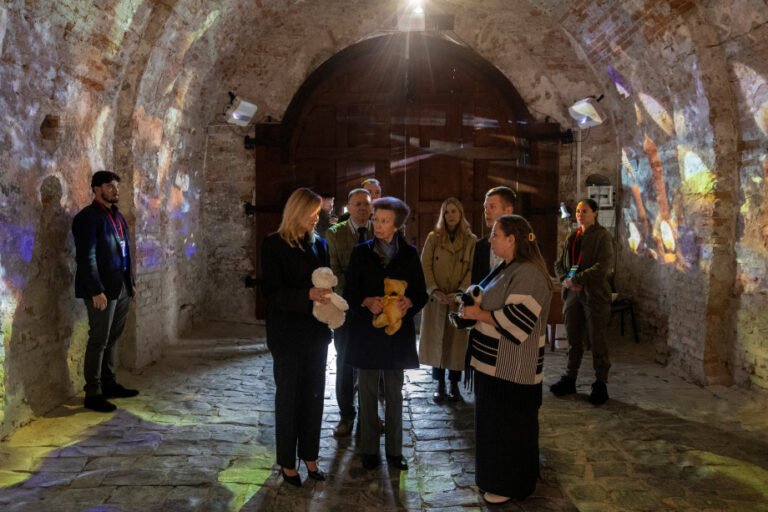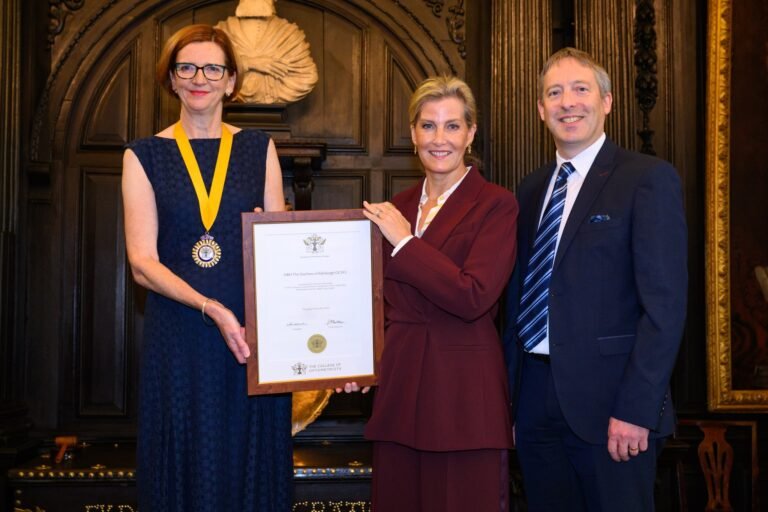The Prince of Wales was in Durham yesterday for a busy day of engagements, which included visits to a church, the University, an emergency service centre and the city’s Cathedral.
Charles’ first visit was to the Church of St Mary the Less, which is the chapel of St John’s College. The church dates back to the 12th century, although it was restored in the 19th century.
The building is also home to the 18th-century burial chamber of the Bowes family, including Mary Eleanor Bowes, who was the ancestor of Charles’ grandmother, Elizabeth Bowes-Lyon – better known as the Queen Mother. The Prince visited the Bowes house, named after the family, to unveil a blue plaque dedicated to Dame Elizabeth Bowes who lived in Durham and was also an ancestor of the Queen Mother.
Across the Bailey, HRH The Prince of Wales unveils a plaque at Bowes House, former home of Dame Elizabeth Bowes, a direct ancestor of HM Queen Elizabeth the Queen Mother. #royalvisit @StJohnsDurham @ClarenceHouse @durhamcathedral pic.twitter.com/SrYusfLc23
— Durham University (@durham_uni) 15 de febrero de 2018
The heir-to-the-throne’s next stop was at Durham Cathedral, where Charles was taken on a tour of the Open Treasure visitor experience.
Outside the Cathedral, the Prince of Wales was greeted by crowds of well-wishers, many of whom were wearing Union flags to welcome their royal guest. The Open Treasure experience required a £10 million investment and is designed to open spaces within the cathedral which were previously unaccessible. The experience includes exhibits in the Monks’ Dormitory and the state-of-the-art Collections Gallery; among the artefacts on display is the Bishop of Durham’s cope, which was worn at the coronation of Queen Elizabeth II back in 1953.
Charles also unveiled a plaque to mark the official opening of the visitor experience.
While at the Cathedral, the Prince also attended a concert to honour Sir Hubert Parry. Parry was an English composer who lived in the 19th and 20th centuries. The Prince of Wales is known to be a long-standing fan of Parry’s music, who is perhaps best-known for the classic anthem ‘Jerusalem’.
The concert was given by members of the Durham University Orchestral Society, Choral Society, Chamber Choir, the University’s Chancellor Sir Thomas Allen, as well as the Cathedral’s Choristers and the Durham County Youth Choir.
The choir, orchestra and audience are excited for a centenary concert celebrating Hubert Parry – special mention to the Cathedral Choristers who’ll be performing alongside university students! @ClarenceHouse @durham_uni @ChoristerSchool @DCChoirAssoc pic.twitter.com/M6YOH6Mb0L
— Durham Cathedral (@durhamcathedral) February 15, 2018
The Prince’s security detail got a little concerned at one point, as a young woman threw her arms around the Royal to embrace him. Charles took it all in good spirits and briefly hugged back, before moving on with his walkabout.
Breaking royal protocol …
Prince Charles hugged at @durhamcathedral. Much to the alarm of his security team ? pic.twitter.com/iTJE6ERJim— Chris Ship (@chrisshipitv) February 15, 2018
The next stop on his Durham trip was to Barnard Castle, where the Prince visited Bowes Museum and the new emergency services station. The Bowes Musem was built in the 19th century by John and Joséphine Bowes and exhibits collections of fine and decorative arts.
Charles also visited Barnard Castle’s new combined emergency services centre; the new station is being shared by the County Durham and Darlington Fire and Rescue Service, Durham Constabulary, North East Ambulance Service and the Teesdale and Weardale Search and Mountain Rescue Team. The centre cost £3.78 million to build and is the first of its kind in the UK.
While at the centre, the Prince of Wales met with staff of the various emergency services who work there, and also spoke to the crowds who had gathered to catch a glimpse of The Queen’s eldest son. Like most royal visits, a plaque was unveiled by the royal guest to officially mark the opening of the new centre.
The Prince’s final engagement was at the Durham Light Infantry Museum, which is located at Durham University’s Palace Green Library. As Charles entered the museum, a bugler sounded a call to announce his presence. During his visit to the Library, the Royal was taken on a tour of the Durham Light Infantry collection. Charles also met with representatives from the Durham Light Infantry, as well as local schoolchildren.

